Background:
DBV2 produces an aftermarket charge pipe setup for the Mk7 GTI / Golf R. The DBV2 charge pipes were made available to perform flow testing with and a comparison test is made with the stock Mk7 GTI charge pipes.
Test Procedure:
Before testing the flow bench calibration is checked against a reference flow plate.
Next the charge pipes are assembled and attached to a stock GTI intercooler and then to the flow bench. At the inlet to the charge pipes a stock turbo muffler with modeled housing is attached.
The flow bench is operated to pull air through the intake setup at an increasing rate until a pressure drop of 28″ of H2O is observed and at that depression a reading of the airflow is made. This process is repeated for the DBV2 charge pipes and other configurations.
Test Results:
The first test is of the entire stock intake piping system along with the stock GTI intercooler and a turbo muffler, as shown in the picture above. The stock system flows 158 CFM.
Next is a test using the DBV2 charge pipes.
This produced an airflow reading of 166 CFM. Approximately a 5% gain, shown on the chart:
A variation on this test was performed using an aftermarket turbo muffler with a flared opening.
Airflow through the DBV2 charge pipes increased to 171 CFM.
Note: The opening of this turbo muffler is larger than the compressor outlet on the IS20/IS38 turbochargers. The area for air to enter the turbo muffler when attached to the turbocharger would be reduced.
More variations were tested to evaluate the individual components. The stock throttle body charge pipe is attached to the flow bench and a bellmouth is fixed at the inlet. This arrangement flows 457 CFM.
Note: The piping is supported during the test to keep the stock hose from kinking.
The DBV2 throttle body charge piping is then similarly attached to the flow bench.
The DBV2 pipe produced an airflow of 530 CFM, a 16% gain, shown on the next chart:
The stock turbo charge pipe was next tested. The pipe is attached to the bench using a slightly smaller adapter due to the size of the connector hose being small at the IC than the throttle body.
Because this adapter is smaller the maximum airflow through the charge pipes will be reduced.
The stock turbo charge pipe flows 275 CFM.
Next the DBV2 turbo charge pipe is attached to the flow bench.
The DBV2 flows 405 CFM, a 47% gain over the stock GTI pipe, shown on the next chart.
The significant difference between these two charge pipes is likely due in large part to the size of the openings, the stock GTI inlet is substantially smaller than the DBV2 pipe.
The next variation to be tested is the full charge pipe setup with the removal of the stock GTI intercooler. The charge pipe to intercooler hoses supplied with the DBV2 kit are sized to work with stock size IC inlet / outlet pipes and the high flowing intercooler that I have available to me is a do88 product that uses a 2.75″ inlet / outlet. Because I do not have a high flowing intercooler available that will work with the DBV2 charge pipes I substituted a short piece of straight silicone hose for the intercooler and joined the two charge pipes together.
This arrangement presents less pressure drop than an intercooler will, but may give an idea of the flow differences that would result if a higher flowing intercooler is available.
The stock charge pipes flow 271 CFM.
Next the DBV2 charge pipes are tested.
The DBV2 setup flows 374 CFM, a 38% gain over the stock pipes, shown on the chart:
Conclusions:
Testing pressure drop with the flow bench cannot simulate the operating conditions in the charge pipes of the GTI and it is possible differences would be greater on an operating vehicle.
In all configurations tested the DBV2 charge pipes produce higher airflow than the stock GTI charge pipes. Airflow increases range from 5% to 47% depending upon the comparison configuration.
When individual charge pipes are tested the DBV2 pipes allow substantially more airflow that the stock GTI charge pipes.

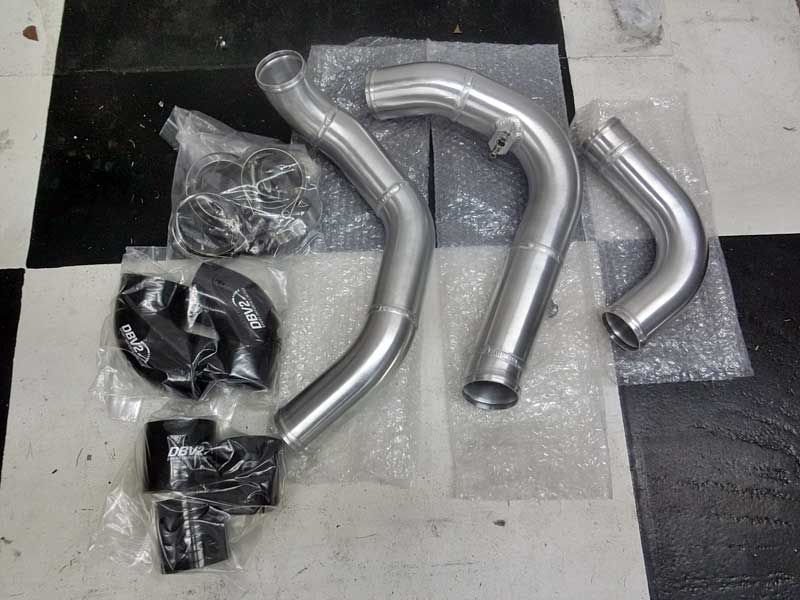





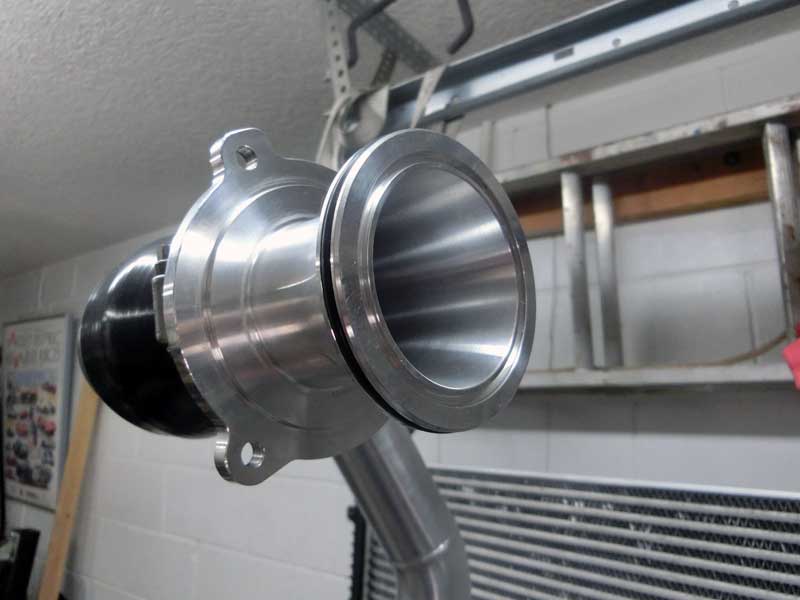

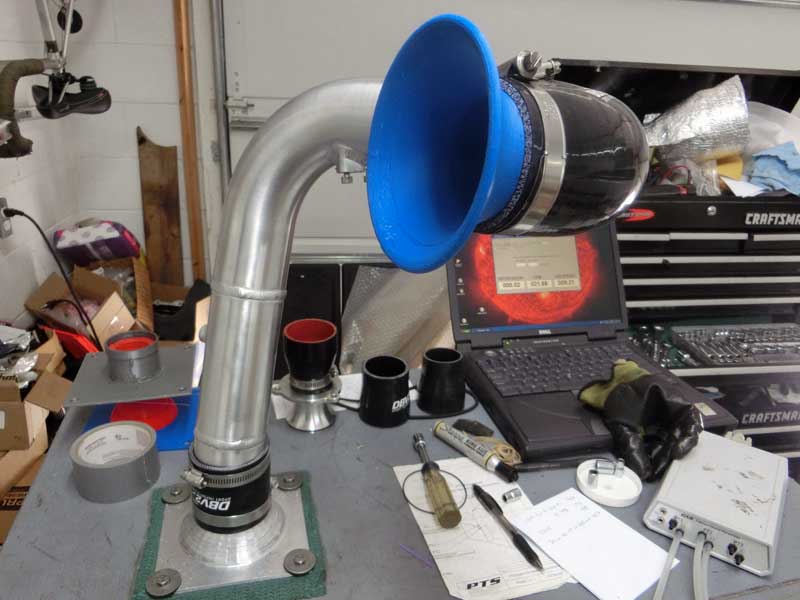
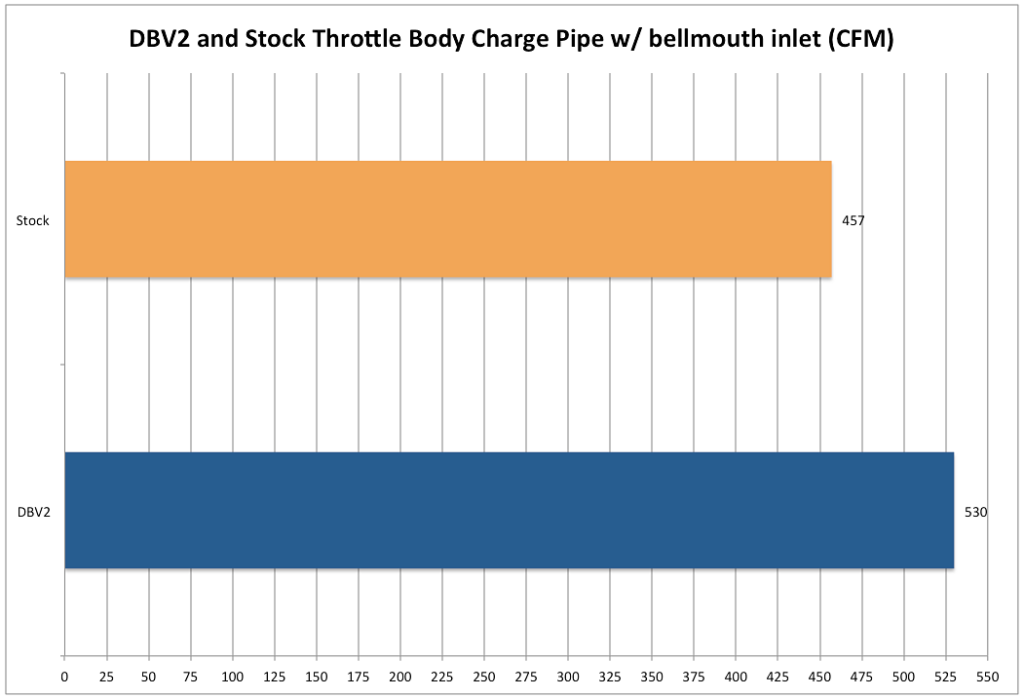
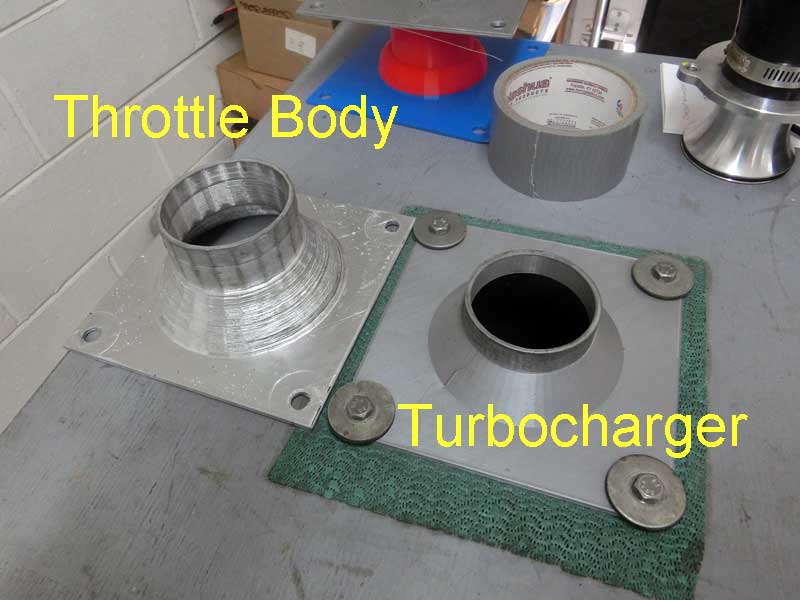
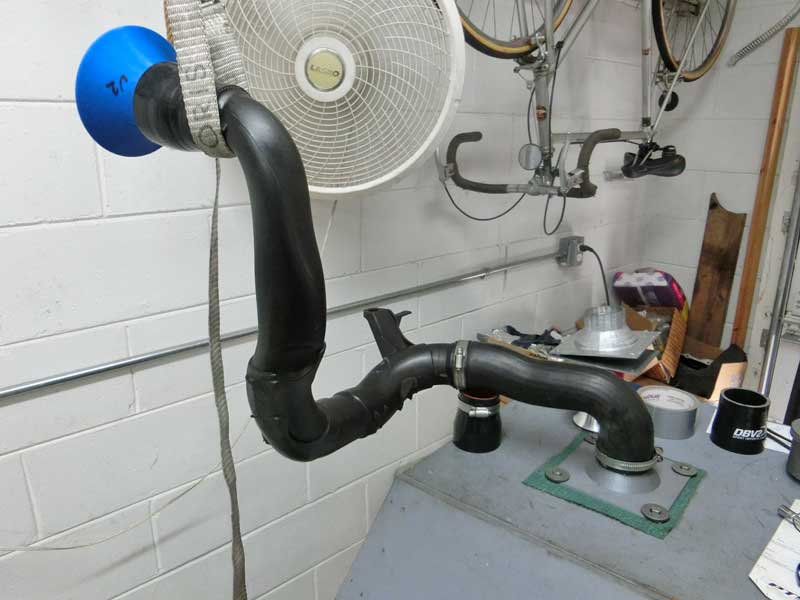
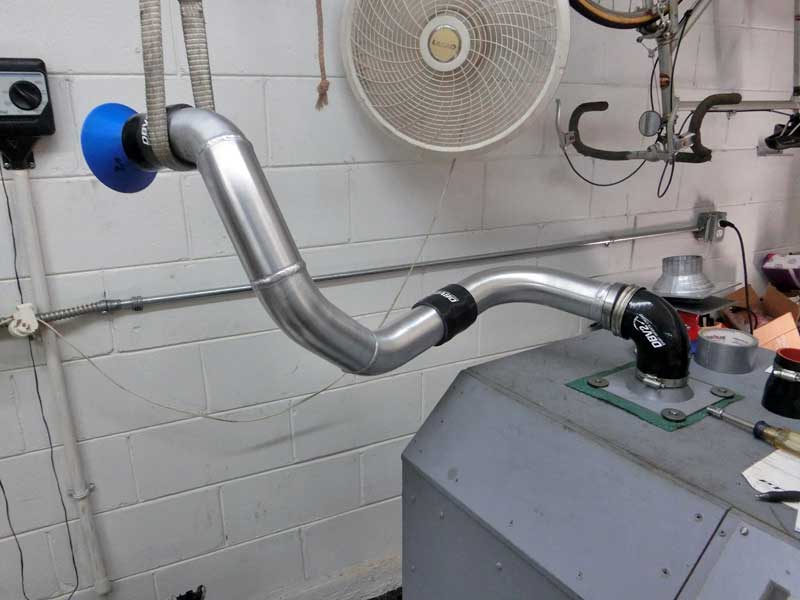
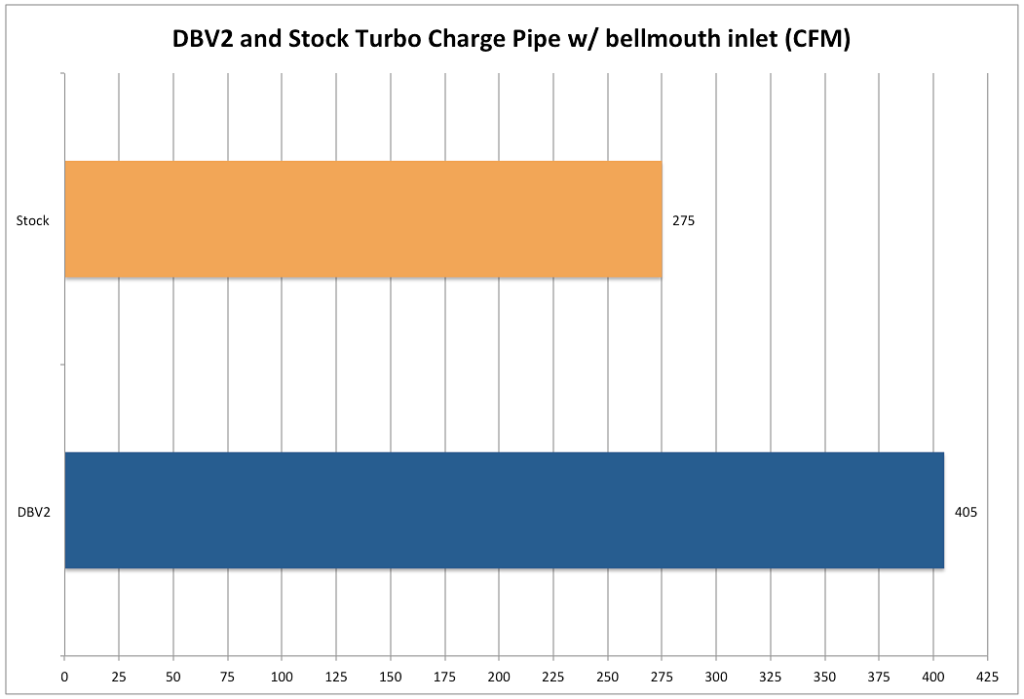
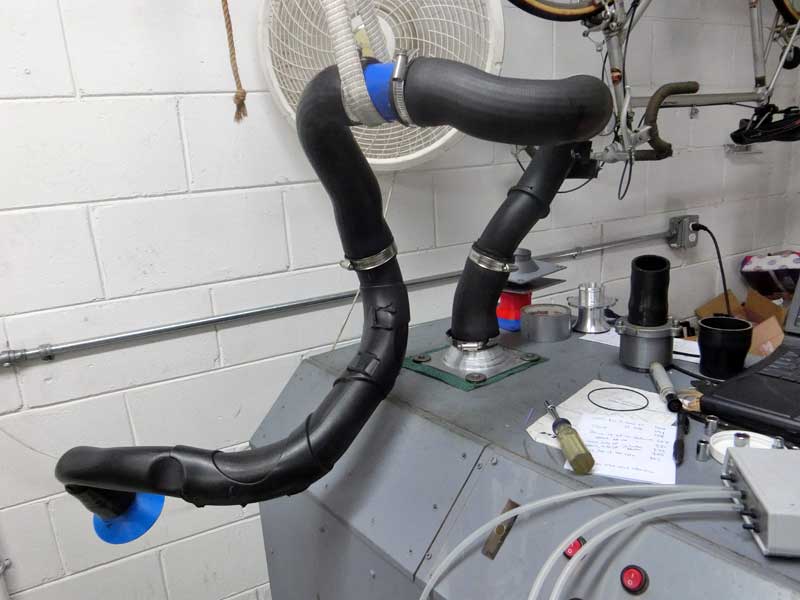
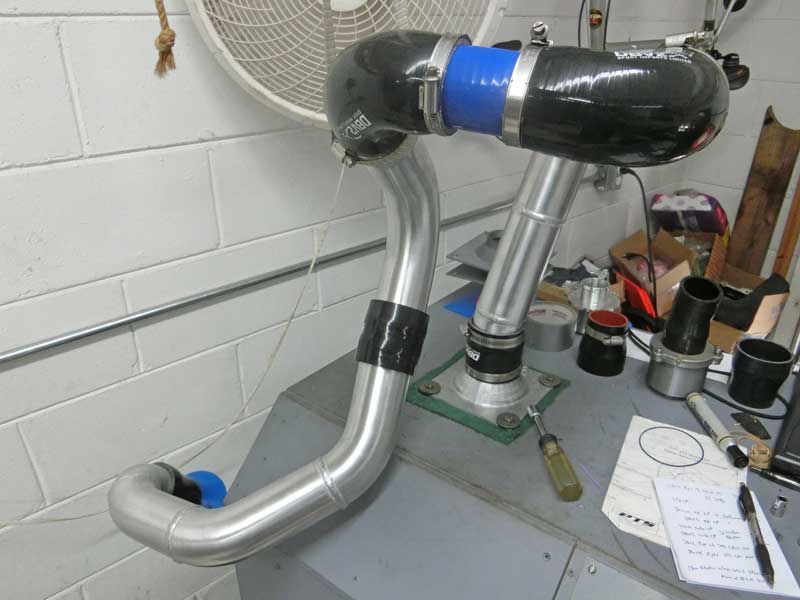
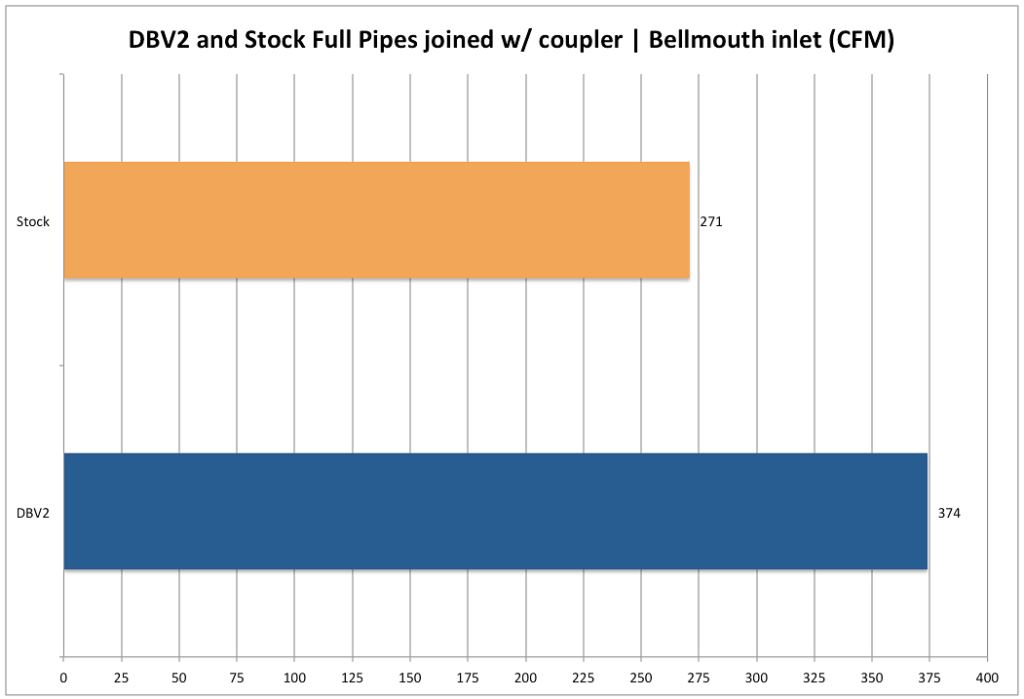
Excellent testing again! I’m shocked how much the bellmouth increased airflow.
Thanks! The turbo muffler and outlet from the compressor seem to be significant factors in limiting airflow through the charge pipes.
Any feedback with quality fitment and finished product?
The parts were loaned to me on the way to being delivered to a customer. I just had them to conduct the test with.